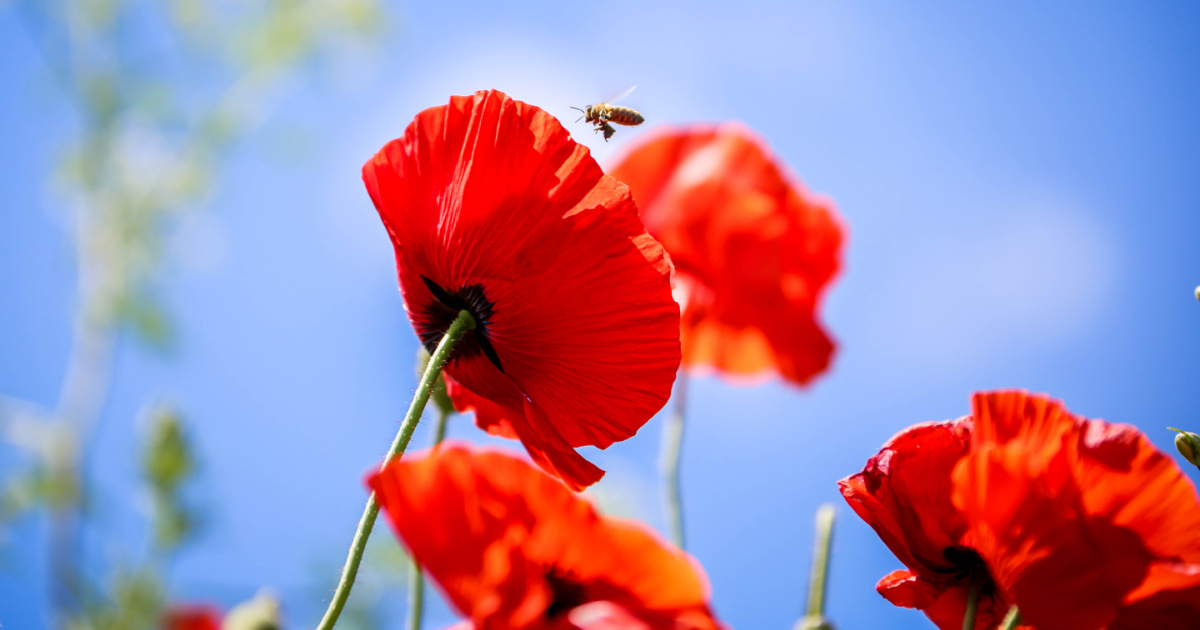The Critical Relationship Between Bees and Agriculture
Posted on Jun 28, 2022
How the plight of our pollinators could impact your dinner plate
What do watermelon, canola, soybeans, and pumpkins have in common? They’re all Kentucky-grown crops that would not exist without bees.
These often-misunderstood insects do more than just produce the honey for our homemade biscuit recipes. While this sweet commodity is a very well-known and economically important hive product, more than 90 edible crops in the United States also depend upon bees for direct pollination, according to the United States Department of Agriculture (USDA).
Pollinators come in many shapes and sizes: Bees, bats, butterflies, and moths all play a critical part in the pollinator-plant ecosystem, but honey bees reign supreme in the agriculture industry. They alone pollinate 80 percent of all flowering plants, according to the USDA.
Tammy Potter, Kentucky State Apiarist, said that monarchs, bats, and native solitary bees contribute approximately $6 billion to the agricultural economy, while honey bees alone provide more than four times that amount ($27 billion), with some researchers estimating higher to include for indirect pollination (e.g. clover and alfalfa).
Oftentimes, farm-owners lean on the expertise of beekeepers to maximize their crop’s potential.
“It’s becoming more common for farmers to have hives on their farms, but due to liability concerns and the work required to maintain hives, a lot of farmers will hire beekeepers to come out with bees until the crop has bloomed,” Potter said.
In this case, communication between farmers and beekeepers is essential to protect hive health. Hives should not be introduced to crops that have had a recent application of certain bee-toxic chemicals. The Kentucky Department of Agriculture’s (KDA) Pollinator Protection Program has introduced an electronic, interactive map that can help strengthen ties between farmers and beekeepers. Registered beekeepers can use the app to receive advanced notifications from farmers regarding upcoming pesticide applications in the area. This provides ample time for the beekeeper and applicator to develop a mutually acceptable strategy to manage pests while mitigating risk to pollinators. These strategies may include covering hives, moving hives, or choosing an appropriate time of day to apply.
In order to access the map, you must first register for an account. The tool is free and anonymous for both farmers and beekepers. More information on the app can be found at kyagr-apps.com/Pollinator/.
Without the help of pollinators, our dinner plates would look much different than they do today. That’s unfortunate news, as global pollinator populations have suffered an alarming decline in recent decades due to invasive pests and diseases, exposure to pesticides and other chemicals, loss of habitat, loss of species and genetic diversity, and changing climate.
One dire problem is that bees simply do not have enough natural food sources to survive. Pollen and nectar are not as readily available as they once were. This has led the beekeeping industry to turn to alternative sources to keep their hives alive: high fructose corn syrup. There are serious concerns among beekeepers about the long-term use of this as a substitute for natural nutrients.
“The shortages of nectar are chronic, so beekeepers have been forced to use high fructose corn syrup,” Potter said. “This is a stop-gap measure, and it’s not like we have much of a choice, quite frankly. We worry that there are residues from these chemicals in the high fructose corn syrup that may have long-term consequences for the hives. That question is still not answered and probably won’t be for a long time.”
When Potter became the State Apiarist in 2014, health data for Kentucky’s bee populations were nearly non-existent. Her daily work consists of visiting all corners of the Commonwealth to gather samples and analyze hive health to create a baseline of data. It will take years of observation to make any conclusions on trends.
“These samples I pull are not smoking guns, but they do give us a window into what’s going on in the hives at certain points of the year,” she said.
The KDA’s Pollinator Protection Plan, launched in 2015, gathers stakeholders across Kentucky, including Kentucky Farm Bureau, several large corporations, colleges and universities, state agencies, and more, in an effort to enhance pollination health through a variety of land management measures.
Even individual homeowners can make a difference by swapping non-native garden favorites for more beneficial, native ones, such as milkweed, phlox, black-eyed susans, asters, or coneflowers, just to name a few. A little research is needed to ensure you’re offering the most nutritious buffet to passing pollinators, but the payoff of happy birds, bees, and butterflies in your yard will be worth it.
Sources:
https://www.kyagr.com/statevet/documents/OSV_Bee_KY-Pollinator-Pro-Plan.pdf
https://www.fda.gov/animal-veterinary/animal-health-literacy/helping-agricultures-helpful-honey-bees
https://www.usda.gov/media/blog/2016/06/24/reversing-pollinator-decline-key-feeding-future
Comments